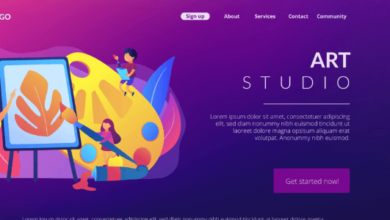develop oxzep7 software

Introduction
In today’s rapidly evolving technological landscape, software development continues to play a pivotal role. Among the myriad of software solutions available, develop oxzep7 software stands out due to its robustness and versatility. This guide aims to provide a detailed overview of developing Oxzep7 software, from understanding the basics to implementing advanced features. Whether you’re a seasoned developer or a beginner, this guide will equip you with the knowledge and skills needed to excel in Oxzep7 software development.
What is develop oxzep7 software?
develop oxzep7 software is a powerful and flexible software framework designed to facilitate the creation of complex applications. Known for its efficiency and scalability, Oxzep7 is utilized in various industries, from finance to healthcare, to develop high-performance software solutions.
Key Features of Oxzep7
- Modularity: Oxzep7’s modular architecture allows developers to build applications with reusable components, enhancing development efficiency and reducing redundancy.
- Scalability: The framework supports the development of scalable applications that can grow with business needs.
- Security: Oxzep7 incorporates advanced security features to protect data and ensure the integrity of applications.
Setting Up the Development Environment
Before diving into Oxzep7 software development, it’s crucial to set up the appropriate development environment. This involves installing necessary tools, libraries, and frameworks.
Tools and Libraries
- Integrated Development Environment (IDE): Popular choices include Visual Studio Code, Eclipse, and IntelliJ IDEA.
- Version Control System: Git is widely used for version control, allowing collaborative development and version tracking.
- Dependencies: Ensure all necessary libraries and dependencies are installed. This typically involves using package managers like npm or pip.
Installation Steps
- Install the IDE: Download and install your preferred IDE.
- Set Up Git: Install Git and configure it with your repository.
- Install Dependencies: Use the package manager to install all required libraries and dependencies.
Understanding the Oxzep7 Architecture
To develop Oxzep7 software effectively, it’s essential to understand its underlying architecture. Oxzep7 follows a layered architecture, promoting separation of concerns and enhancing maintainability.
Layers of Oxzep7 Architecture
- Presentation Layer: This layer handles the user interface and user interactions.
- Business Logic Layer: Encapsulates the core functionality and business rules of the application.
- Data Access Layer: Manages data retrieval and storage operations, interacting with databases or other data sources.
Benefits of Layered Architecture
- Maintainability: Easier to manage and update individual layers without affecting the entire system.
- Reusability: Components can be reused across different applications, reducing development time and effort.
Developing the Presentation Layer
The presentation layer is crucial as it determines how users interact with the application. This layer involves designing and implementing user interfaces (UIs) that are intuitive and user-friendly.
UI Design Principles
- Consistency: Maintain a consistent design language across the application.
- Accessibility: Ensure the UI is accessible to users with disabilities.
- Responsiveness: Design UIs that work seamlessly across different devices and screen sizes.
Implementing the UI
- Frameworks: Use UI frameworks like React, Angular, or Vue.js to streamline the development process.
- Styling: Employ CSS or preprocessor languages like Sass or Less for styling the UI components.
- Testing: Conduct thorough testing to identify and fix UI issues, ensuring a smooth user experience.
Implementing Business Logic
The business logic layer is where the core functionality of the application resides. This involves implementing algorithms, workflows, and business rules that drive the application.
Key Considerations
- Modularity: Write modular code to enhance reusability and maintainability.
- Efficiency: Optimize algorithms for performance to ensure the application runs smoothly.
- Testing: Implement unit tests to validate the correctness of the business logic.
Example: Implementing a Calculation Module
pythonCopy codedef calculate_discount(price, discount_rate):
"""
Calculate the discounted price.
:param price: Original price
:param discount_rate: Discount rate in percentage
:return: Discounted price
"""
return price - (price * (discount_rate / 100))
Data Access Layer
The data access layer is responsible for interacting with data sources, such as databases or APIs. This layer ensures data is retrieved and stored efficiently and securely.
Database Management
- Choosing a Database: Select a database that fits the application’s requirements (e.g., SQL databases like MySQL or NoSQL databases like MongoDB).
- ORM Tools: Use Object-Relational Mapping (ORM) tools like Hibernate or Sequelize to simplify database interactions.
Data Access Patterns
- Repository Pattern: Encapsulates data access logic, providing a clean separation between the business logic and data access code.
- Unit of Work Pattern: Manages transactions, ensuring that all data operations are completed successfully before committing changes.
Integrating External Services
Modern applications often need to integrate with external services, such as third-party APIs or cloud services. This section covers how to integrate these services into Oxzep7 applications.
API Integration
- RESTful APIs: Use HTTP methods to interact with RESTful APIs.
- GraphQL: An alternative to REST, allowing clients to specify exactly what data they need.
Cloud Services
- AWS: Utilize Amazon Web Services for cloud storage, computing, and other services.
- Azure: Microsoft’s cloud platform offering a wide range of services for application development.
Best Practices for Oxzep7 Development
Adhering to best practices is crucial for developing high-quality software. This section outlines some of the best practices for Oxzep7 development.
Code Quality
- Code Reviews: Conduct regular code reviews to ensure code quality and identify potential issues.
- Linting: Use linting tools to enforce coding standards and catch errors early.
Documentation
- Commenting Code: Write clear and concise comments to explain the purpose and functionality of code segments.
- Documentation Tools: Use tools like JSDoc or Sphinx to generate comprehensive documentation.
Security
- Authentication and Authorization: Implement robust authentication and authorization mechanisms to protect the application.
- Data Encryption: Encrypt sensitive data both in transit and at rest.
Testing and Debugging
Thorough testing and debugging are essential to ensure the application functions correctly and efficiently. This section covers various testing and debugging techniques.
Types of Testing
- Unit Testing: Test individual units of code to ensure they work as expected.
- Integration Testing: Test the interaction between different modules or components.
- End-to-End Testing: Test the entire application from start to finish to ensure it meets user requirements.
Debugging Techniques
- Logging: Implement logging to track and diagnose issues.
- Breakpoints: Use breakpoints in the IDE to pause execution and inspect variables and states.
Deployment and Maintenance
Deploying the application and ensuring its smooth operation is the final step in the development process. This section covers deployment strategies and maintenance practices.
Deployment Strategies
- Continuous Integration/Continuous Deployment (CI/CD): Automate the deployment process to ensure rapid and reliable releases.
- Containerization: Use Docker or similar tools to containerize the application, making it easy to deploy and scale.
Maintenance Practices
- Monitoring: Implement monitoring tools to track the application’s performance and detect issues early.
- Updates: Regularly update the application to fix bugs, patch security vulnerabilities, and add new features.
Case Study: Successful Oxzep7 Implementation
To provide a practical perspective, let’s explore a case study of a successful Oxzep7 implementation.
Background
A healthcare startup needed to develop a scalable and secure patient management system. They chose Oxzep7 for its modularity and scalability.
Implementation
- Modular Design: The application was designed with reusable modules for different functionalities like patient registration, appointment scheduling, and billing.
- Integration: Integrated with external APIs for electronic health records (EHR) and insurance verification.
- Security: Implemented robust authentication and data encryption to ensure patient data security.
Outcome
The application was successfully deployed and scaled to handle thousands of users, significantly improving the efficiency of the healthcare startup’s operations.

FAQs
What makes Oxzep7 suitable for large-scale applications? Oxzep7’s modular architecture and scalability make it ideal for large-scale applications, allowing developers to build and maintain complex systems efficiently.
How can I ensure the security of my Oxzep7 application? Implement robust authentication and authorization mechanisms, encrypt sensitive data, and conduct regular security audits to ensure the security of your Oxzep7 application.
What are the best practices for writing maintainable Oxzep7 code? Write modular and reusable code, conduct regular code reviews, use linting tools to enforce coding standards, and document your code thoroughly to ensure maintainability.
How do I integrate third-party services with Oxzep7? Use APIs to integrate third-party services with Oxzep7. Depending on the service, you might use RESTful APIs or GraphQL to facilitate the integration.
What tools can help with Oxzep7 development? Popular tools for Oxzep7 development include IDEs like Visual Studio Code, version control systems like Git, and testing frameworks like Jest or Mocha.
How can I optimize the performance of my Oxzep7 application? Optimize algorithms for efficiency, use caching strategies, conduct performance testing, and monitor the application’s performance to identify and address bottlenecks.
Conclusion
develop oxzep7 softwareinvolves understanding its architecture, setting up the development environment, and adhering to best practices. By following this comprehensive guide, you can create efficient, scalable, and secure Oxzep7 applications. Whether integrating external services or ensuring robust security, this guide covers all aspects to help you succeed in Oxzep7 software development.





